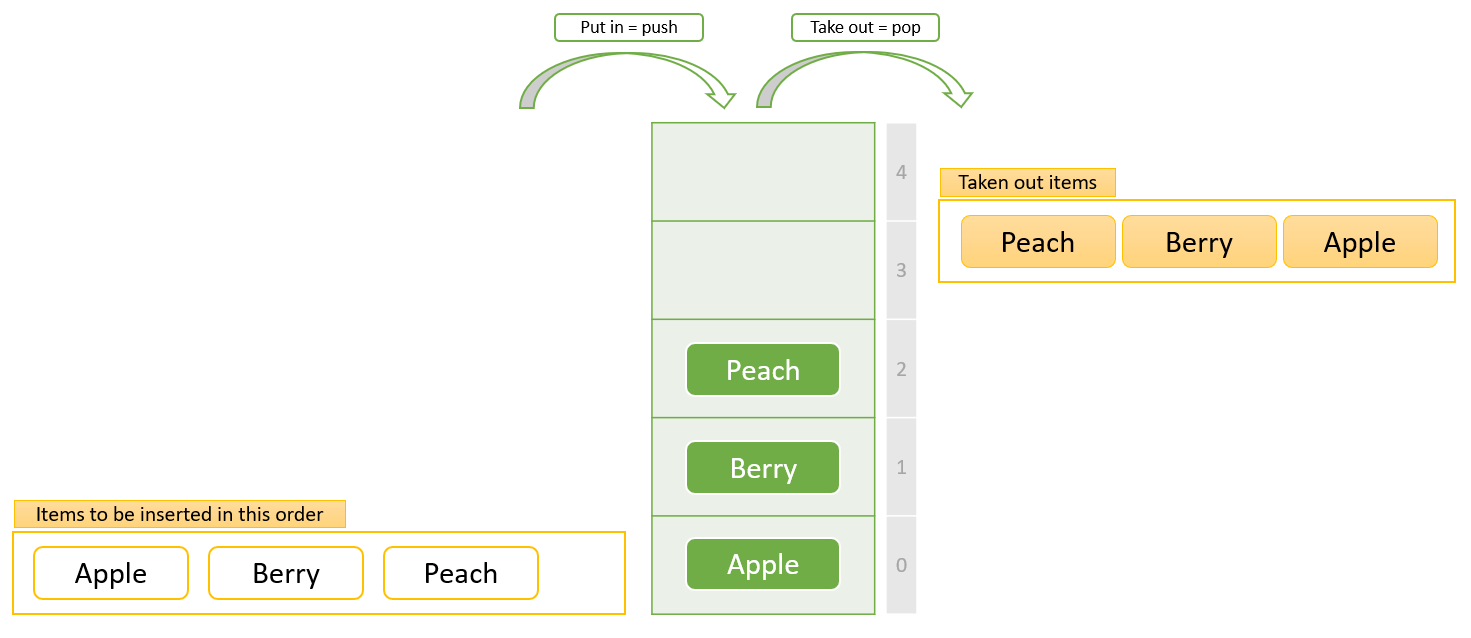Stack - data structures #4
data structure on YouTube C#In this article I’m going to show you how to create a self-made stack data structure – which is a fundamental part of programming – with an array (or list) representation in the inside.
Stack structure
Stack data structure is one of the most fundamental structures (alongside with queue) in programming. This is mainly because the functionality is very simple, you can only add/remove items and that’s all. Of course linked list is basically doing the same, so what is the difference?
The twist is how we add/remove items! If we insert a new item (which is called Push; pushing) it goes to the top of the stack. When you remove an item (which is called Pop; popping) you are also limited in terms of which item you can remove. Automatically only the top item can be removed. On this image below you can see this concept represented with an array.
It is important to highlight that queue uses LIFO concept, which is an acronym for Last In First Out princple. In the video #1 at the bottom you can better understand how LIFO works – if you are not familiar with it yet. More detailed explanation with examples can be seen in video #1 at the bottom, where I talk about the fundamentals of Stack and Queue structures.
Based on LIFO, if you push the items (in the order of apple, berry, peach) you can see how these will be stored inside the stack (green items). If you pop the items, you will receive the inverted order of the input items. This is important, because it can be good for us in many cases.

Coding the stack
Creating the queue class
First thing to create the class itself, which will use generic types T (if you are not familiar with this, please read my previous articles in the “other readings” section down below, especially the linked list article). I also placed a TraversalHandler delegate in order to avoid hardcoded Console.WriteLine calls inside the data structure.
1
2
3
4
5
6
7
8
9
10
11
12
13
class MyStack <T>
{
T[] items;
int count;
public delegate void TraversalHandler(T content);
public MyStack(int size)
{
items = new T[size];
count = -1;
}
}
Please note that instead of array you can use the built-in List<T> as well (or even you can use your self-made linked list class), but in that case you do not need to specify the size with the paramter in the constructor.
Adding the methods
Basically there are way too simple methods, so I will write only a few words about them here:
- Push: putting inside a new item
- Pop: taking out the top (next) item
- Peek: taking out the top (next) item without removing it (only checking what is at the top)
- Traverse: it is just an extra helping method, to help us check what are the items inside; this uses the TraversalHandler delegate
Detailed explanation about the coding can be found in video #2 below.
Other advised readings
- linked list
- what is the concept of a linked list (vs array)
- how to create a self made linked list class using generic types, nested classes and other interesting concepts
- jump to article
- binary search tree
- what is a tree, why is it binary and why is it searchable
- difference between tree and linked list
- how to create a self made BSTree class similarly to linked list
- jump to article
- queue
- what is a queue and why is it important in programming
- jump to article
Videos
Video #1 - Theory of the stack (and queue) data structure
Video #2 - Coding the stack
Downloadables
You can download the full solution by clicking here.
Or use CLI with these commands and then look for the 05-QUEUE-STACK folder:
1
2
cd Desktop && mkdir Downloaded_Project && cd Downloaded_Project
git clone https://github.com/siposm/data-structures.git